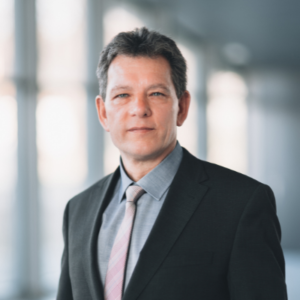1. Photovoltaic cells: a world first
The entire west facade is covered with Graetzels cells. Invented by Professor Mickaël Graetzel at EPFL, the latter produce energy and operate in a similar way to conventional solar panels but feed on light and not on the sun, which makes them more effective in overcast weather than solar panels. In addition, they color the light that passes through and offer a natural and colorful decoration at the Campus. This is the first large-scale implementation of these cells that have many benefits.
2. The use of natural light
For both user comfort and energy savings, the STCC makes maximum use of natural lighting, even in the 3000-seat plenary room. The artificial lighting uses the latest technologies available since EPFL gets its supplies with 100% renewable electricity.
3. Use of lake water for heating and cooling
EPFL is cooled and heated with water from Lake Geneva, thanks to a distribution network of cold water and hot water at low temperature produced by heat pumps. The flagship idea of the STCC’s energy concept, devised by the EPFL’s Operations Department, was to use the heat from the water used to cool the EPFL buildings to heat the STCC, thanks to a heat pump. This use of the cooling water discharges from EPFL makes it possible to produce hot again in winters and cold in summer. At the end of this course of cold and hot, the water returns to the lake by the river Sorge which flows nearby, without harming the environment.
4. Geothermal piles
Built on very unstable soils, the STCC rests on piles 30 meters deep. The EPFL Soil Mechanics Laboratory took advantage of this project to install four geothermal piles equipped with absorber tubes, in which circulates a heat transfer fluid that allows the exchange of heat with the ground. On the test bench, the Laboratory is studying the potential of heating in winter and cooling in summer a building, but also the deformation of piles recorded in depth.
5. Sustainable mobility
Perfectly located in a metro loop with its own stop, the STCC invites its delegates to join the campus by public transport. The center has well-developed pedestrian and cycling access, 500 bike parking spaces and a 20-bike self-service station linked to the Lausanne-Morges network. In front of the door, users will find all the services: shops, restaurants, hotel, medical and dental service, pharmacy and kiosk.
In general, we invite the organizers and their guests to adopt an environmentally friendly behavior through small actions such as the measured distribution of equipment, recycling of waste and sustainable restoration (consuming local and seasonal products).

